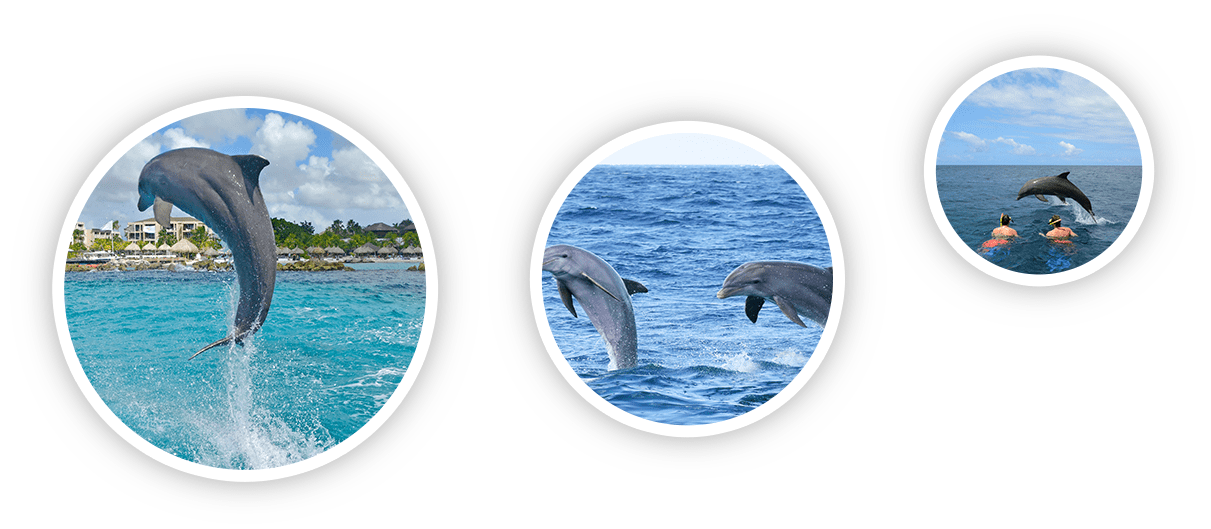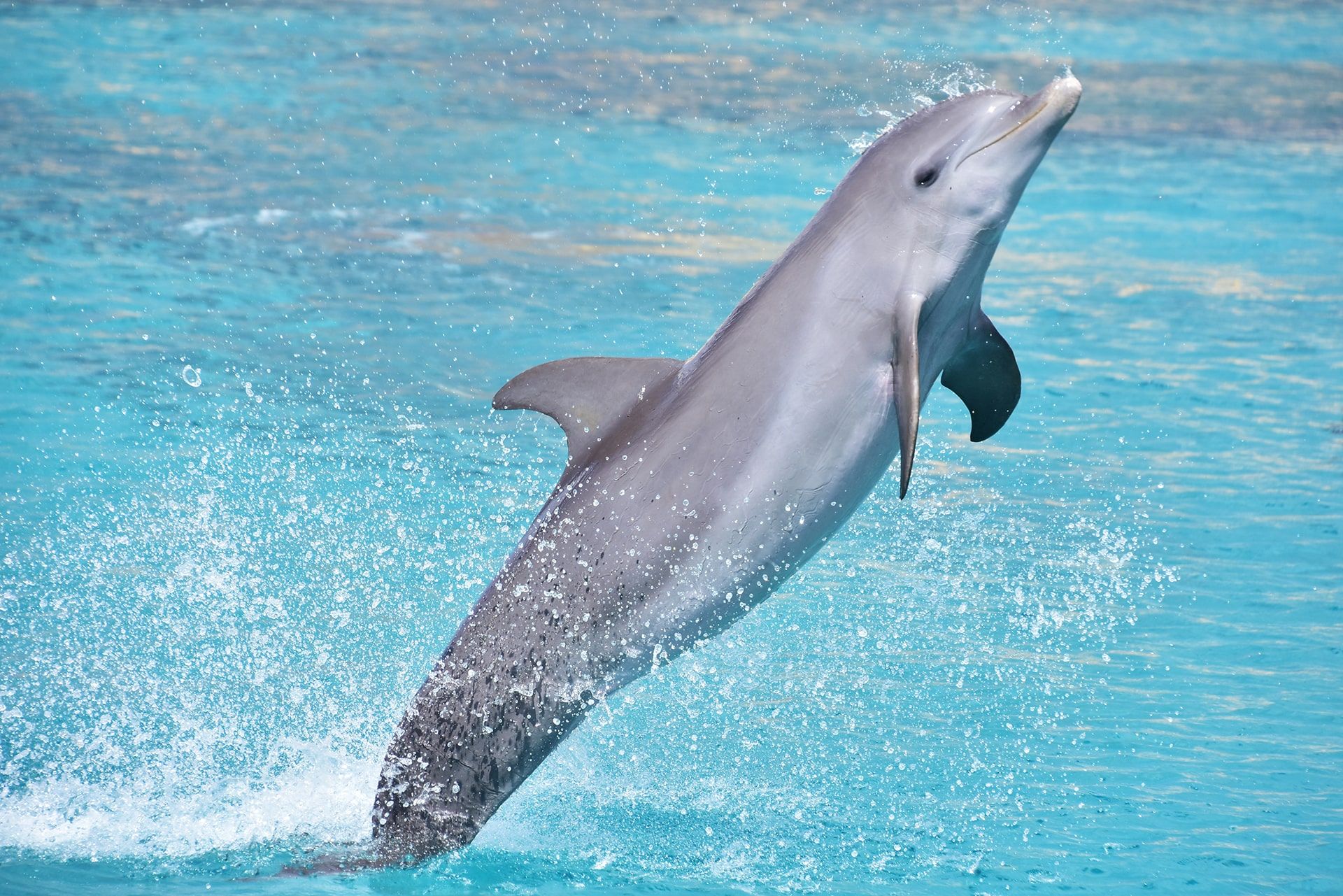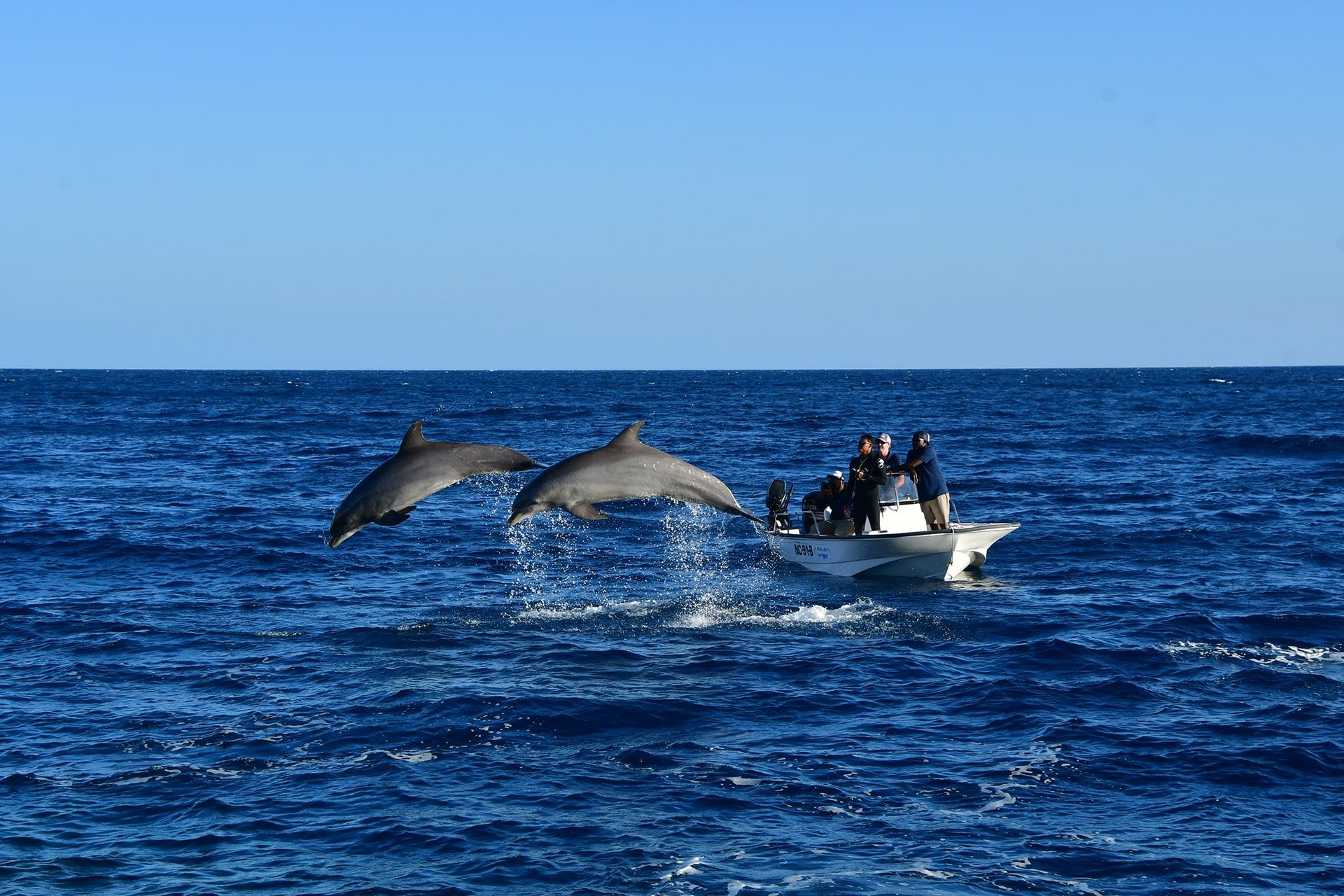Open Sea Training
At Dolphin Academy, we are proud to be one of the only facilities in the world that works with trained dolphins in the open sea. Depending on factors such as the time of day, the weather, the amount of boat traffic in the ocean, etc., our training staff will ask dolphins if they would like to join us at sea. They have opportunities ranging from daily to multiple times per week.
We use gates that lead from the dolphin habitat to an open sea channel. During a dolphin’s initial introduction to the channel, it is often difficult to encourage them to join us. However, once they become more familiar with the gates and the channel, they will follow our boat further outside along the coral reef. If they become uncomfortable or nervous for any reason, they will turn back to the channel and wait for our return.



Bottlenose dolphins
Why do they behave this way? These are not deep-water, oceanic dolphins. They are a coastal ecotype of Bottlenose dolphins who establish residency within shallow waters. One of the longest studies of this species has been ongoing in Sarasota Bay, Florida for 50 years. These dolphins have lived for generations within a single home range. Thus, Coastal Bottlenose dolphins are territorial by nature, it’s in their DNA.
For the dolphins at our academy, their habitat at Curaçao Sea Aquarium is their core area. When we invite them to join us along the outside reefs, they must first ‘map’ this coastline until they are completely familiar with every detail before attempting to explore further. Just as in nature, the males tend to map greater distances than females, comfortably ranging up to 4 km away from the aquarium. Why do they come back? It’s their home. Out at sea, they are free to leave or choose to return ‘home’ with us. We consider our open water program to be symbolic of the cooperative relationship trainers have developed with the dolphins.
Except for a few younger animals who haven’t been introduced to the program yet, all the dolphins at Dolphin Academy have been given the opportunity to learn to swim through a gate that leads to an open ocean channel. A few of the older females have chosen not to swim to the channel, whereas all of the males have chosen to participate.
Safety first
Upon seeing Dolphin Academy dolphins outside, many people tend to ask why we don’t simply leave the gates open so they can wander in and out whenever they choose. The answer is quite clear: it isn’t safe. If the dolphins are left outside unattended, they run the risk of harassment by aggressive persons, being given inappropriate food, and getting entangled in fishing gear. How do we know this? There are hundreds of reports every year of this happening to wild dolphins along busy coastlines all over the world.
We have desensitized the dolphins to the presence of people and boats. Being outside with us is very safe because we can supervise and assess the behavior of other boat captains, fishermen, swimmers, and divers. If people misbehave, (and inevitably humans do), then we simply go back home.


Collaboration
Collaborating with dolphins in a zoological setting requires us to provide for their physical and psychological needs. Although we may have eliminated the survival pressures faced by wild dolphins regarding finding food, avoiding predators, and habitat degradation, we are still obligated to provide the dolphins with an interesting and stimulating life. And we believe that the health and enthusiasm of the dolphins here are a testament to our success in that pursuit.

